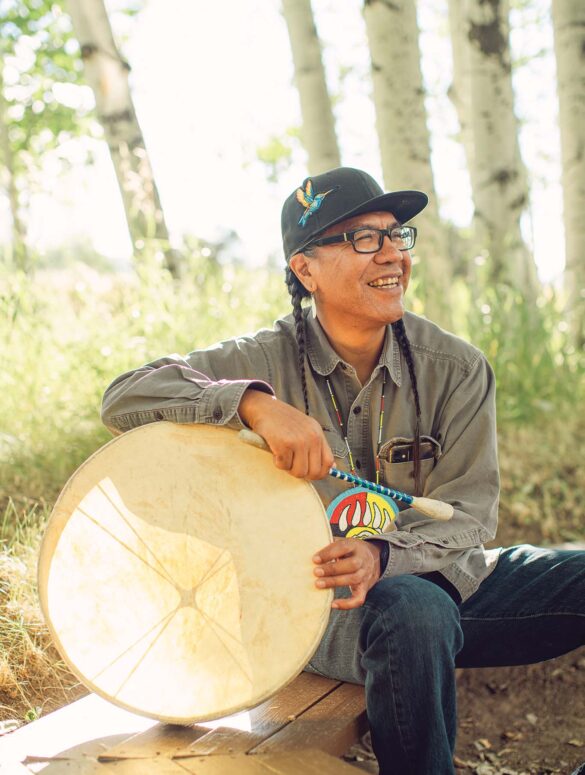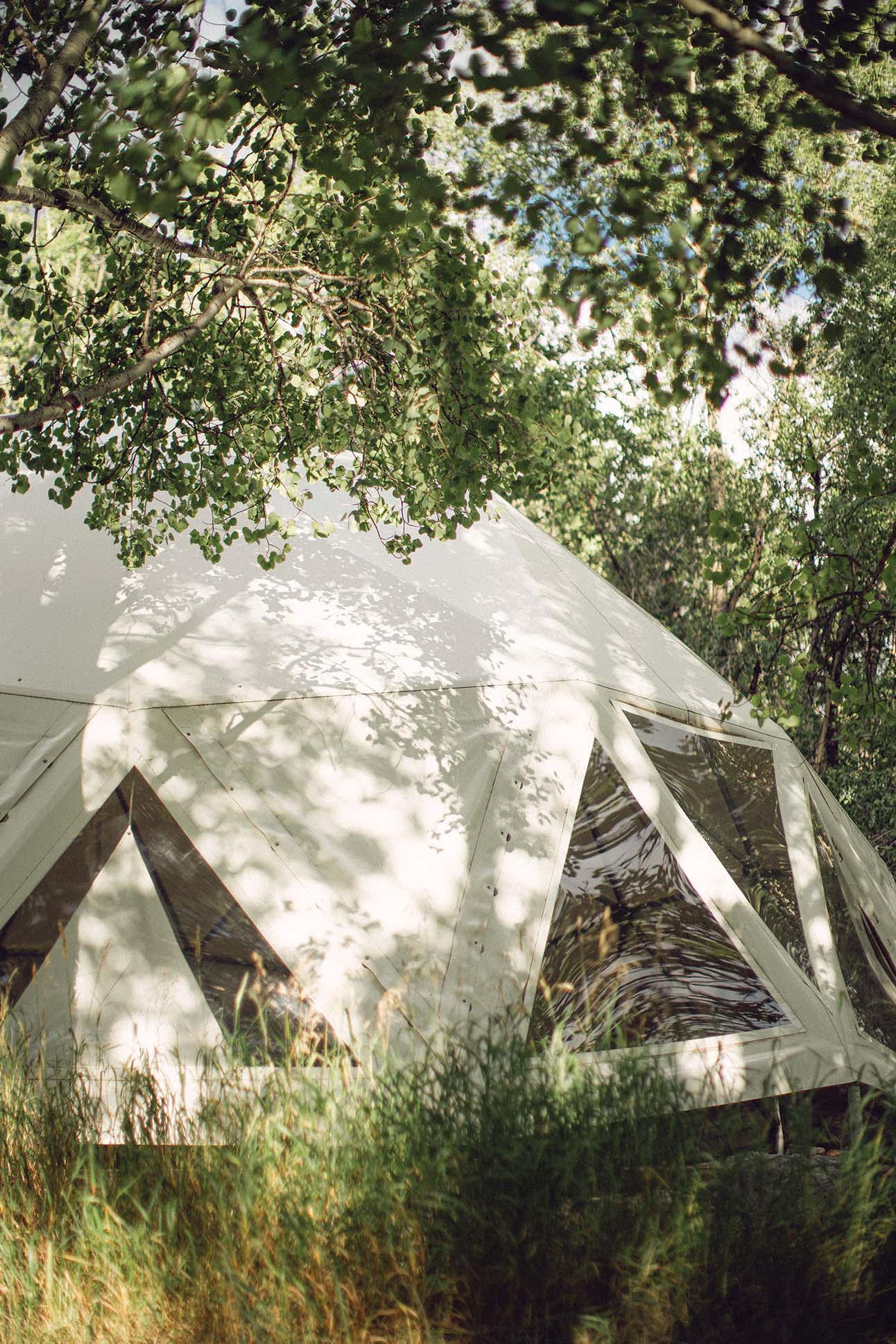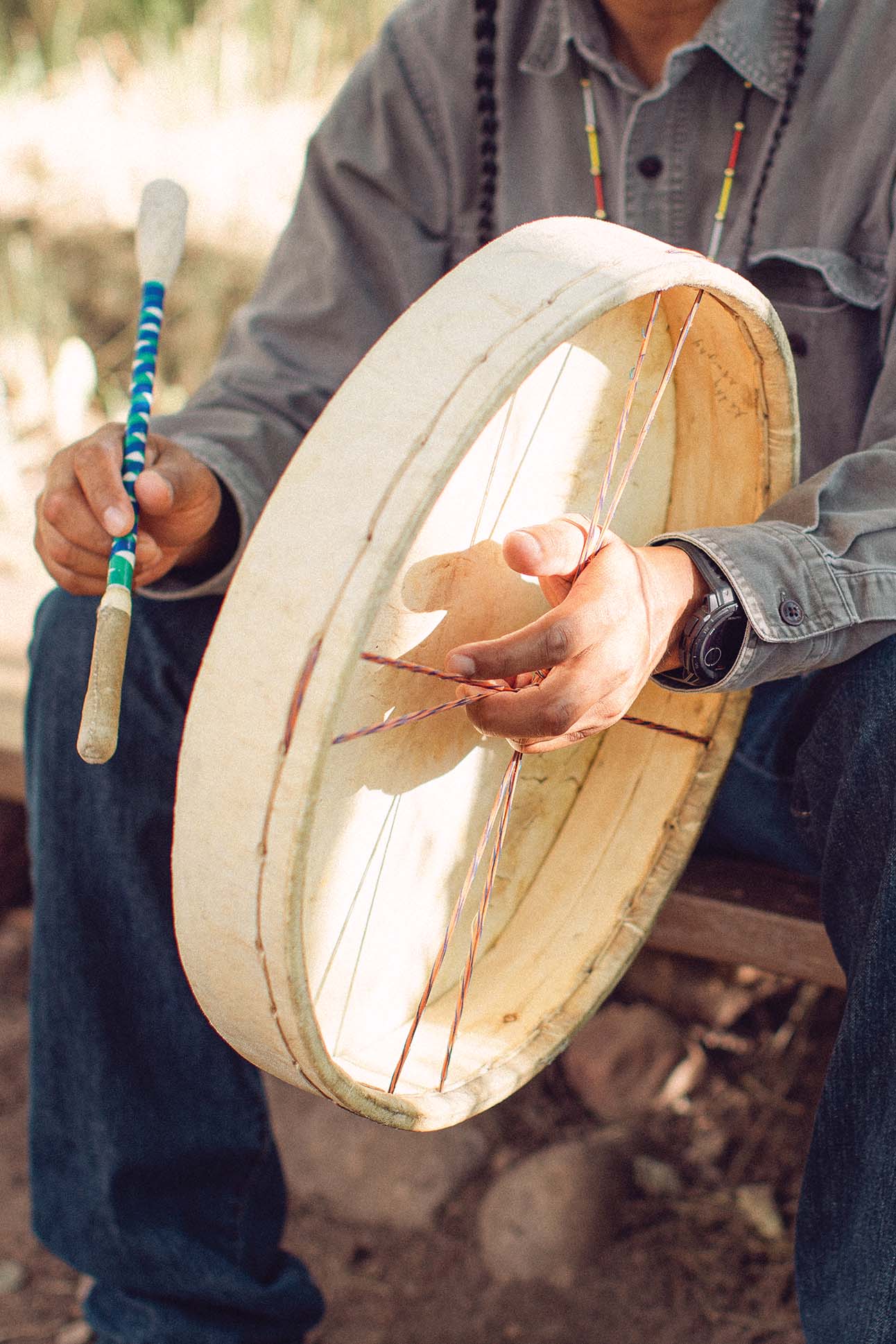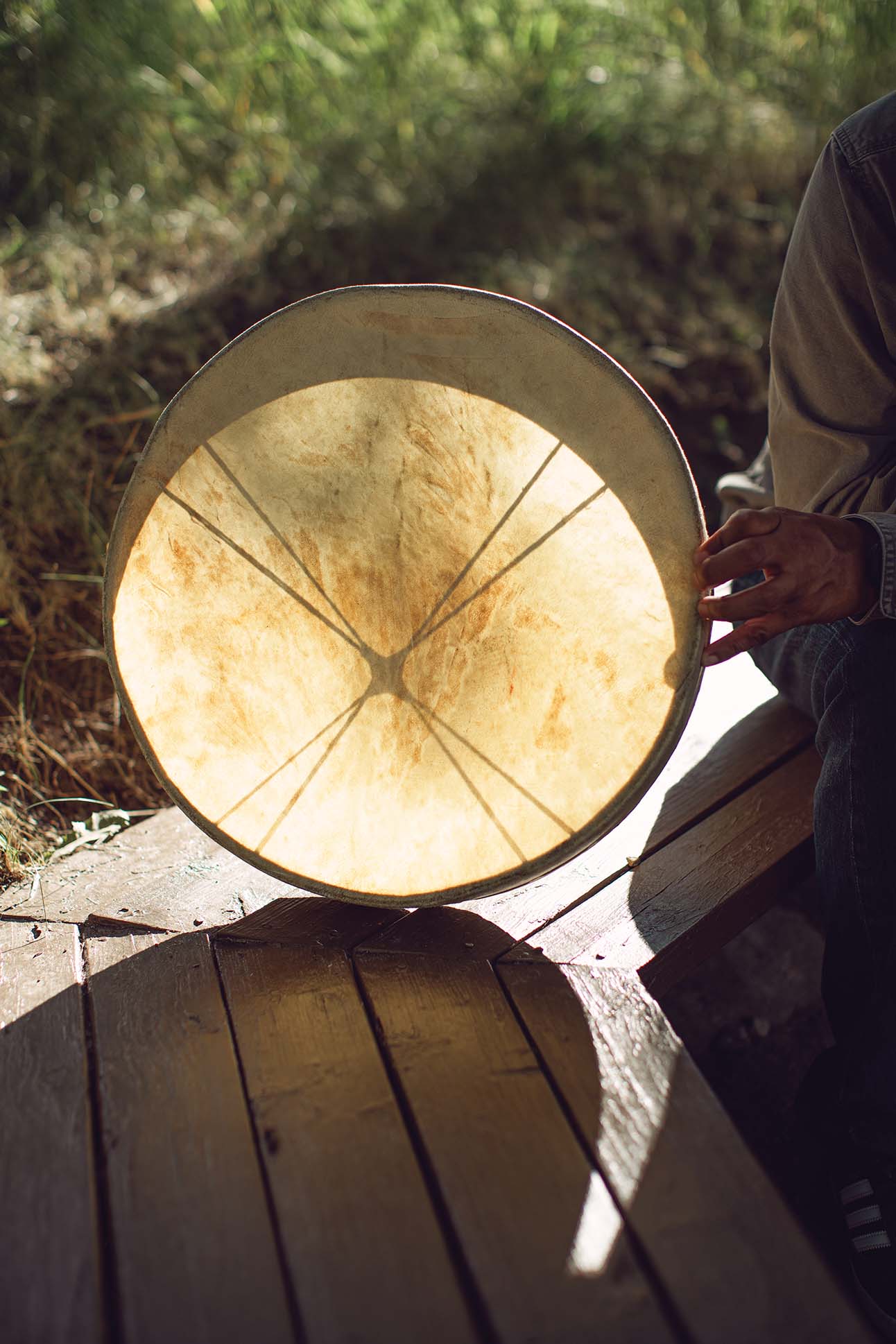As told to Lauren McNally
Images by Trevor Triano
I’m Uncompahgre on my mother’s side, and on my father’s side, I’m Hopi and Choctaw. On the Hopi side, my family is from a village called Shungopavi in Second Mesa, Arizona, and my paternal grandmother is Choctaw, originally from Oklahoma. Generally, with most native tribes, you go to live with your mother’s side of the family, so I grew up on the Uintah and Ouray reservation in northeastern Utah, where the Ute people were sent when they were forced out of Colorado. Returning to the ancestral homelands of my tribe, the Uncompahgre Utes, was a big part of my decision to move to the valley.
My great-grandfather was the bear dance chief on our reservation, and he passed the responsibility on to me. Other tribes have bear dances, but none do the dance like we do. A lot of other Ute traditions we have today come from other tribes: sun dances, peyote meetings, sweats, pow wows. The only real original dance of the Ute people is the Ute bear dance.

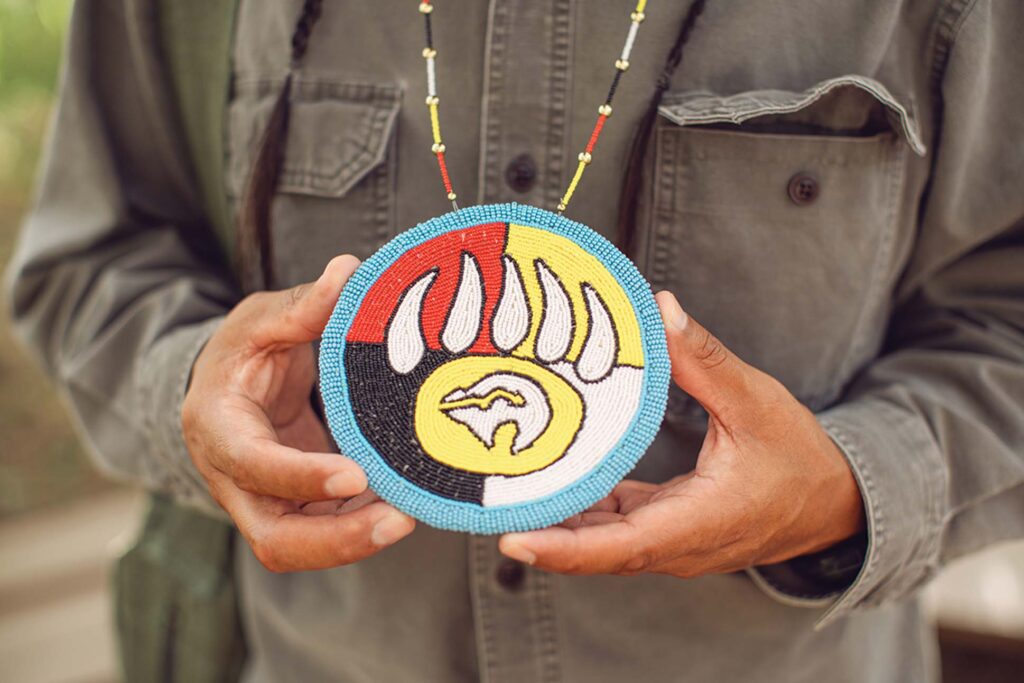
But there was a time on my reservation when nobody was going to the bear dance. Native people were looked down on in mainstream society, and that was where a lot of loss of culture happened. Older generations didn’t share the language and culture with their kids because they didn’t want to subject them to the racism and hostility that they themselves experienced. Even native people would make fun of each other for being native.
I do notice a resurgence of interest in Ute culture today, but sometimes people don’t know where to begin, or they fall into inaccurate portrayals of our culture because there’s no one there to teach them otherwise. It’s hard, too, when there are so many things distracting Ute youths from their culture and language. A lot of Ute people on the reservation don’t practice or have knowledge of our culture anymore.
They’re working to incorporate tribal culture into the curriculum at Uintah River High, the tribal high school on the reservation—I think we need to build on that a lot more and start looking at approaches other than typical institutionalized education. The way Ute people have always been taught was hearing stories about coyote, buzzard, rabbit, and all these characters that taught lessons about how to be a good person. I think we need to incorporate more of that mindset into schools, alongside math, English, and everything else.
Around 2011 or 2012, I met Nina Gabianelliand Lisa Hancock of the Aspen Historical Society, and they brought me on board to do educational programs on Ute history and culture in local schools. It grew from there and now I’m doing at least 10 or 15 school visits over the next two months.
What I’ve learned going into the schools is that there’s not much knowledge at all on native people. A lot of the kids thought we were all dead. It’s my job to jump in and say, no, we’re still here, on reservations and in cities, and just like everything evolves, we’ve evolved as well. Just because we’re not riding horses, living in tipis, and dressed in buckskin or feathers doesn’t mean we’re not Ute people. I remind the kids that they didn’t come to school in a horse and buggy.
I’ve run into some natives here in the valley—a few Navajos, maybe one Chippewa—but I don’t know of any other permanent Ute residents, so I feel like it’s my responsibility to dispel some of the stereotypes and other misconceptions about native people. Things like natives on reservations getting handouts from the government—a reservation is like a small state within a state, so we get federal funding and grants just like any county or state, but each tribe has different treaties and relations with the federal government. We’re not just a big, broad native nation. The tribe I’m a part of, we were put on land with nothing but rocks, lizards, and desert, come to find out later it’s full of oil and gas, which we develop and profit from. Other tribes don’t have that resource—they got put on whatever land they got.
My great-grandfather didn’t have rights as a citizen until 1924—he was born a foreigner in his own country. I was born in 1975, before the American Indian Religious Freedom Act was passed. People think this is all in the past, but none of it was very long ago.
My focus going into local schools is on the Ute culture and language as a modern reality versus something you read about in a book or learn from a non-native person. Eventually I intend to create a 501(c)(3) to do Ute bear dances in the valley.We did one at the end of the exhibition on Ute history I worked on with the Aspen Historical Society, and I thought it was a good turnout of Ute people coming and enjoying the bear dance. That was the success, in my opinion. Non-native participants are always welcome, but that isn’t my focus. It’s more meaningful to me to return Ute culture to the area, to have the Ute people return to this valley and practice our culture for ourselves.

